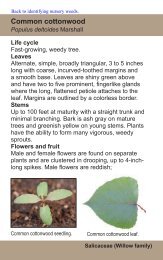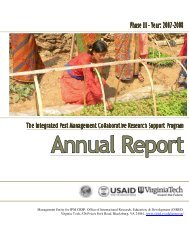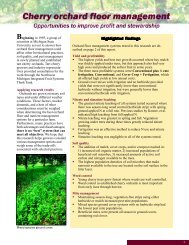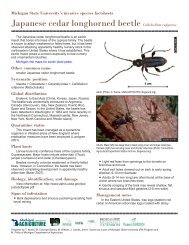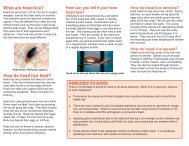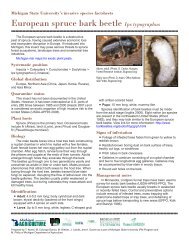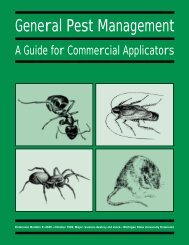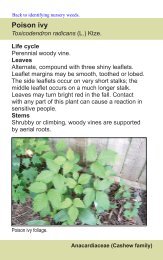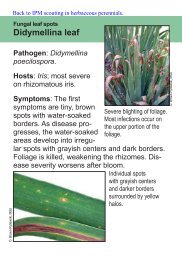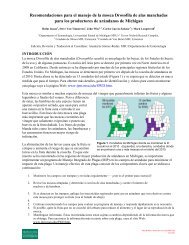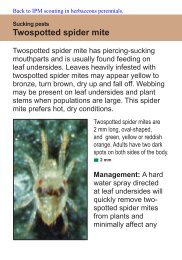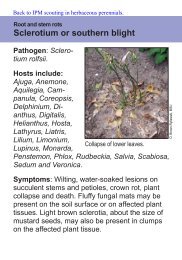Whole Manual - Michigan State University: Integrated Pest ...
Whole Manual - Michigan State University: Integrated Pest ...
Whole Manual - Michigan State University: Integrated Pest ...
Create successful ePaper yourself
Turn your PDF publications into a flip-book with our unique Google optimized e-Paper software.
C<br />
8<br />
H<br />
A<br />
P<br />
TE<br />
R<br />
NEMATODE MANAGEMENT<br />
LEARNING OBJECTIVES<br />
After completely studying this chapter, you should:<br />
■ Understand the basic biology of plant-parasitic<br />
nematodes.<br />
■ Be familiar with nematodes of importance in vegetable<br />
production.<br />
■ Know the importance of monitoring nematode population<br />
densities.<br />
■ Understand the strategies and tactics used to manage<br />
plant-parasitic nematodes.<br />
INTRODUCTION<br />
Nematodes are animals. More specifically, nematodes<br />
are non-segmented roundworms, which separates them<br />
from their close relatives the segmented roundworms,<br />
more commonly known as earthworms. Adult nematodes<br />
can vary in length from 1/30 inch to nearly 9 feet.<br />
Nematodes are commonly found in soil or water, including<br />
oceans. They may be the most numerous multicellular<br />
organisms on earth. A shovelfull of garden soil typically<br />
includes more than 1 million nematodes.<br />
The majority of nematode species are regarded as beneficial.<br />
They feed on bacteria, fungi, and other soil-inhabiting<br />
or aquatic animals. Some are quite specific in the<br />
types of foods they feed on; others are considered omnivores<br />
and potentially feed on a wide range of foods.<br />
The life stages of a female (top) and male (bottom) cyst<br />
nematode.<br />
Nematodes are extremely small. Here a nematode is laid on<br />
top of a cotton thread to compare size.<br />
Some species of nematodes are parasites of plants and<br />
animals. The focus of this chapter will be plant-parasitic<br />
nematodes. Plant-parasitic nematodes share three common<br />
characteristics. First, they are all microscopic, with<br />
adults ranging in length from about 1/30 to 1/4 inch in<br />
length. Secondly, they are obligate parasites of plants,<br />
meaning they must have living plant tissue to feed on to<br />
grow and reproduce. Finally, they all possess stylets,<br />
which are structures similar to hypodermic needles that<br />
nematodes use to puncture plant cells and obtain the<br />
cell’s contents. All plant-parasitic nematodes spend at<br />
least part of their life cycles in soil, though many are principally<br />
found in root or leaf tissue.<br />
Vegetable Crop <strong>Pest</strong> Management 81<br />
Chapter 8



